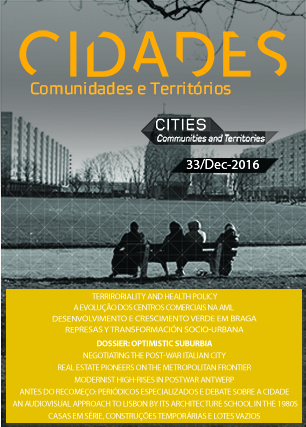Houses in series, temporary constructions and empty lots. The suburbs through contemporary art.
Keywords:
Art and Architecture, outskirts, heterotopiesAbstract
In twentieth-century art, it´s clearly identifiable a general overcoming of the traditional boundaries between different media, and the development of obvious interchanges between art and architecture in particular. In fact, the transgressive process initiated in the scope of the first avant-gardes, was recaptured and consolidated during the second half of the century by the dynamics created by the neo avant-gardes – in which we can recognize a deliberate convergence between the fields conventionally established by artistic and architectural production. From the 1950s on, a contact zone between these two areas has been defined: a blurred territory determined not only by a mutual influence, but also by the sharing of a tectonic lexicon. In a scenario determined by slips between media, and in articulation with the revisions of modernism that began to emerge, it was then that artistic practice, somehow functioning as an heterotopia, became a critical space where architecture was analyzed, confronted and challenged. Moreover, revisiting and discussing its practices, and questioning its solutions, to a certain extent, art expanded the debate on architecture. Recapturing some of the main theoretical references that define this process, and drawing from the work of several artists, this paper aims to discuss some of the multiple ways contemporary art has been addressing urban growth and suburbia.
Downloads
Published
Issue
Section
License
CIDADES, Comunidades e Territórios by DINÂMIA'CET-Iscte is licensed under a CC-BY licence.






